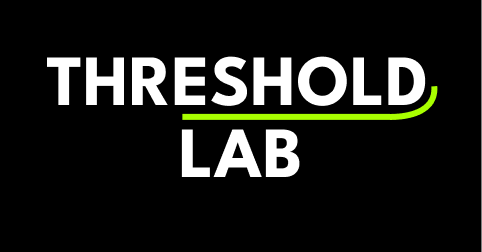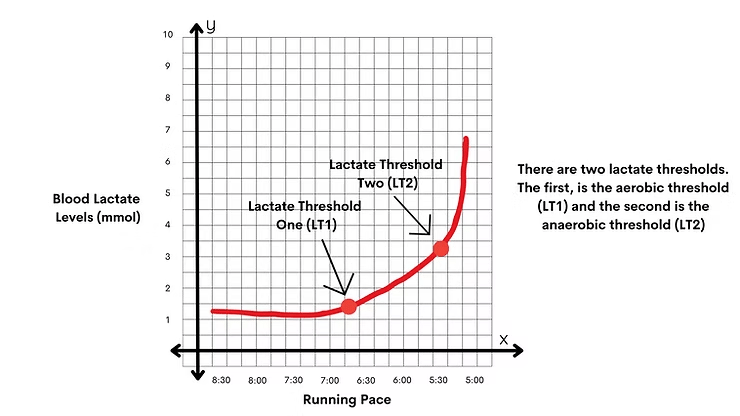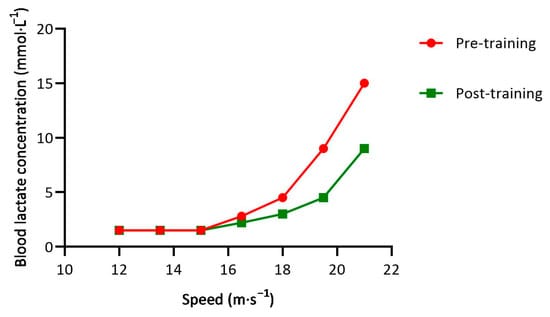- The Threshold Lab
- Posts
- Issue #1: Lactate Threshold
Issue #1: Lactate Threshold
Why it matters and how to apply it to your training

✍️ Author’s Note
Welcome to the first edition of the Threshold Lab newsletter! I’m Stephen Pelkofer, an experienced HYROX athlete with a men’s pro personal best of 59:41 and men’s pro doubles best of 51:39. If you want to learn about my story and how I got here, check out this Instagram post here.
The goal of this newsletter each week is to pick a training topic related to running or HYROX, do deep research into it, and provide actionable protocols that the reader can take away and apply to their training immediately. Let me read the research, listen to the experts on podcasts and youtube, and then give you the tools to make it work for you.
👨💻 Introduction
The inaugural topic: Lactate Threshold.
If you keep up with the running or HYROX world, it’s pretty likely that you’ve heard athletes or influencers talk about “threshold training” on instagram or youtube. It’s gaining traction across the endurance world, with more athletes and coaches incorporating it into their training programs. Personally, I am a huge proponent of using threshold training to enhance endurance performance – I think implementing this into my programming is a big reason why I was able to run two sub-60 HYROX pro races this season.
🔬 Deep Dive
Lactic acid is a term most athletes are familiar with, as it is typically used to describe muscle fatigue from intense exercise bouts. The term is a bit misleading when it comes to understanding what lactate is. Lactate is a byproduct of glucose utilization by muscle cells. Lactate is also a fuel source for your muscles, the heart, the liver, and even your brain. Lactate is not acidic and does not cause fatigue, but it is highly correlated with it. The acidic feeling comes from a change in pH of the muscle cells due to the increase in hydrogen ions – which is the burning sensation you can feel during intense exercise. The main point here is that lactate in itself is not bad – what matters is your ability to produce and clear lactate.
So what is the lactate threshold? There are generally two thresholds people refer to: Lactate Threshold 1 (LT1) and Lactate Threshold 2 (LT2). I’m mainly going to talk about LT2 in this issue. When you are performing an exercise like running, you are producing and clearing lactate. At any point, you could measure your blood lactate level (with a fancy pricking device) to get a reading of the concentration. Elite endurance athletes often go to a lab to get their blood lactate levels tested at various speeds during a workout, and then get a graph like this where x = running speed and y = blood lactate level:
At slower speeds, the blood lactate levels don’t increase much. That’s because the body can clear lactate just as fast as it's producing it. At a certain point, blood lactate levels start to gradually rise above resting levels – this is what we would define as LT1 (aerobic threshold). Further to the right in the chart, there is a point where blood lactate levels start to increase rapidly – this is LT2 and the primary focus of this issue. Other names for LT2 include: anaerobic threshold and Maximal Lactate Steady State (MLSS). Once you cross this threshold, the effort becomes harder to sustain and you will eventually have to slow down or stop.
Something to keep in mind about this lactate curve – it’s not always going to look this perfect in practice. Things like sleep, heat, humidity, caffeine intake, carbohydrate intake, and general stress can all cause the blood lactate levels to fluctuate. Additionally, different athletes are going to have different blood lactate levels – there is no magic mmol level that is the LT2 for everyone. Athletes with more fast twitch muscle fibers are going to be able to produce more lactate at any given speed compared to an athlete that has a higher concentration of slow twitch muscle fibers. Generally speaking, fast twitch athletes are better at events like the 400m (anaerobic power) and slower twitch athletes are better at middle and long distance events (aerobic ability).
So how can you identify your LT2? The reality is most people are not going to (and shouldn’t) pay hundreds of dollars to go get blood lactate testing done in a lab. There are some simpler ways to estimate it. Here are two of them:
50-70 min race pace: For a recreational runner, this might be right around your 10k pace, but for an advanced runner, it might be closer to 15k pace. If you have a recent 10k or half-marathon time, that is a good starting point to plug into a calculator like the this one: vdot.
Feel: Threshold should be comfortably hard. You should be able to say a sentence or two without completely losing your breath. Threshold pace workouts do not completely destroy you – if they do, you’re doing them too fast.
And why does this matter? LT2 is very predictive of endurance performance. In general, if you can push or pull this curve to the right by accumulating more volume at or near LT2, you are going to be a better runner and endurance athlete. By training your body to clear lactate more efficiently, you will be able to run at a faster pace without accumulating fatigue and needing to slow down. Here is an example of what an elite endurance athlete would want to see in their data after a large block of threshold training:
The green line shows that the lactate curve was pushed to the right, meaning the athlete is able to run faster paces before reaching LT2. One side note here, there is a balance – if you only train threshold and never train speed, you are going to lose some of that top end anaerobic ability (this will be a future newsletter topic).
Lactate threshold training should not be confused with speed or VO2 max work. The beauty of training at or around threshold is, you can do A LOT of volume at these paces without creating extra fatigue – the recovery demands are not nearly as high as something like all out 400m intervals. Training is ultimately a balance between stressing the body and recovering from that stress – lactate threshold training is one of the best bang for your buck styles to achieve adaptation while remaining healthy and available.
Time for the lab notes ⬇️
🧪 Lab Notes
In every issue of this newsletter, the “Lab Notes” are going to be the protocols that you can apply to your training and routine right away. The goal of this section is to translate the science into actionable steps for the reader, whether you’re a recreational runner/HYROX competitor, or someone pushing the limits of their peak potential.
Identify an estimate of your threshold pace using one of the methods above (I prefer a 10k time trial and plugging that into an online calculator)
This is the pace you will run your threshold intervals or runs at
Add 1 of these sessions into your weekly routine
Experienced athletes could handle 2-3 of these per week depending on training age.
Threshold intervals
Wk1: 4x5min @ threshold pace with 60s walking rest
Wk2: 5x5min @ threshold pace with 60s walking rest
Wk3: 6x5min @ threshold pace with 60s walking rest
Continuous running
Wk1: 1 mile warmup, 15 min @ slightly slower than threshold pace, 1 mile cool down
Wk2: 1 mile warmup, 20 min @ slightly slower than threshold pace, 1 mile cool down
Wk3: 1 mile warmup, 25 min @ slightly slower than threshold pace, 1 mile cool down
Alternation runs: on = slightly faster than threshold, off = marathon pace
Wk1: 1 mile warmup, 3 min on/off x5, 1 mile cool down
Wk2: 1 mile warmup, 3 min on/off x6, 1 mile cool down
Wk3: 1 mile warmup, 3 min on/off x7, 1 mile cool down
Reminders
In a dedicated block to focus on increasing your threshold, you might repeat one of these 3-week blocks twice
If you are in a base training or off-season period, you might hit one of these session once every 14 days as a way to maintain threshold pace
Notes for the HYROX crowd
Threshold training should be built into your support and specific training periods for a race – the 60-90 minute duration is directly applicable here
You can apply these same principles to training paces on the rower and ski-erg
Accumulating more time at threshold is likely the biggest bang for your buck training method in HYROX that we know of right now, especially for beginner to intermediate athletes
😁 Work with Me
I’m an experienced HYROX Athlete and Coach with a Men’s Pro best of 59:41 and a Men’s Pro Doubles best of 51:39. I have helped many athletes either achieve a new PR or prepare for their first race. Fill out the 1:1 intake form below if you want a free consult or signup today through the Move Fast Lift Heavy platform here!
1:1 HYROX Coaching 💪🏻
| The Threshold Lab Community 🧪
|
That’s it for this first edition of the Threshold Lab. I hope you come along for the ride as I dive into more topics. If you enjoyed this and found it useful, please share it with a friend!

